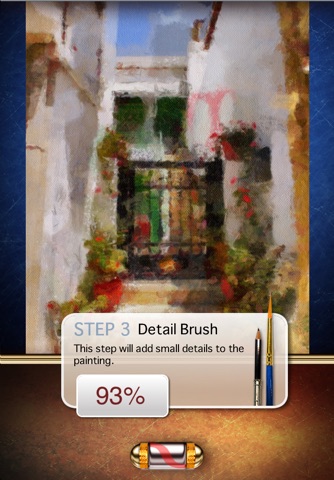
This new collection of Autopainter styles continue to amaze you with its impressive artificial inteligence to automatically paint your photos. This is not just a filter, it uses styles based on the works of worlds best known painters.
The first volume of AutoPainter featured mixed styles of oil and aquarell painting, the volume 2 focused on primarily illustration techniques and this new volume 3 revisits the impressionist and neoclassical styles.
✭Monet✭
Based on real Claude Monet painting style of broken color technique with intense palette to achieve sensation of light in a painting
Tip: This signature style works great for classical impressionistic scenes of landscapes with flowers and plants, lakes and its color reflections.
✭Camille✭
Inspired by: Jean.B. Camille Corot (1796 -1875) and Camille Pissarro (1830 - 1903)
Chunks of heavy paint mixed with patches of under-painted canvas borrows the style from Neo-Calssicism and early Impressionism
Tip: Works for landscapes and buildings, occasionally for people and animals.
✭dOrcia✭
Inspired by: quick modern brush paintings
Follows Classical Impressionistic style with a modern twist and bright colors. This stile never gets old, and it is popular for paintings of both cities (Paris in rain) and countryside (endless iterations of Tuscany village theme).
Tip: This is a style that works best on large self-descriptive shapes. It loves green yellow and red and uses quick long strokes to hide details
✭Gogh 2✭
Inspired by: Van Goghs Sunflower paintings
This high quality style shows one of the signature Van Gogh technique as seen in various Sunflower paintings even when looking at the brushstroke details.
Look at our other AutoPainter apps that feature additional painting techniques.
Note: This process is rather sophisticated and while we tried to do full resolution it was not stable due to high memory requirements. The current medium resolution of 1280 in longest size is a good compromise between quality and usability. It produces pretty great and sharp results because unlike a photo this is completely digitally created image - it has no noise and no Bayer approximation. If you are interested we have applications for desktop.



